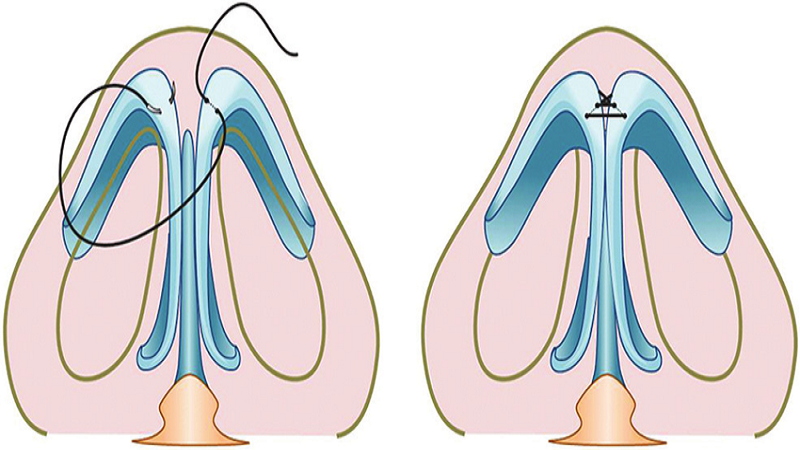Nose suture after rhinoplasty: Full Information
Nose surgery or ШұЫҢЩҶЩҲЩҫЩ„Ш§ШіШӘЫҢ It is one of the most popular and common cosmetic surgeries in the world. This surgery can be done for various reasons, including improving the shape and appearance of the nose, correcting breathing problems, or repairing injuries caused by accidents.. Sutures play a very important role in the final recovery and the desired result of rhinoplasty. In this article, we will discuss the complete review of nasal sutures after rhinoplasty.
Types of nose sutures
1.. Absorbable sutures
These types of stitches are absorbed by the body over time and do not need to be removed. These sutures are usually used for internal sutures, where they are more difficult to access.. Absorbable sutures can be made of different materials such as polyglycolic acid, polydioxanone or cutgut..
2.. Non-absorbable sutures
Non-absorbable sutures require removal and are usually used for external sutures. These sutures are made of more resistant materials such as nylon, polypropylene or silk. Non-absorbable stitches are usually removed by the doctor between 5 and 10 days after surgery.
The importance of sutures in nose surgery
Sutures play a vital role in correct and effective rhinoplasty healing. they to:
- Stabilization of tissues in the correct place: Sutures hold the tissues in place for proper and integrated healing.
- Reduce the risk of infection: Sutures can act as a mechanical barrier and prevent bacteria and germs from entering the wound..
- Reduce bleeding: Sutures can help control and reduce bleeding after surgery.
- Improve the final appearance: Accurate and correct sutures can facilitate the improvement of the final appearance and the reduction of scars.

Official page Ш§ЫҢЩҶШіШӘШ§ЪҜШұШ§Щ… Dr Behnam khorami (Best of nose surgery) follow the.
Post-operative care and stitches
1.. Primary care
after Nose surgeryPrimary care of stitches is very important. These cares include:
- Cleanliness and hygiene: Keep the suture area clean. Your doctor may recommend that you use antiseptic solutions or antibiotic creams.
- Avoid pressure and impact: Avoid applying pressure or hitting the nose and stitches.
- Preventing stitches from getting wet: External stitches should not get wet. Use waterproof protectors when washing your face or showering.
2.. Symptoms of infection
Surgical sutures can become infected. Some symptoms of infection include::
- Redness and swelling: Redness and swelling at the suture site that does not improve over time.
- Purulent secretions: Yellow or green discharge from the sutures.
- Pain and sensitivity: Severe pain or sensitivity at the site of the stitches.
- Fever: Abnormally elevated body temperature.
If you notice any of these symptoms, see your doctor immediately.
Ыі. Removal of stitches
Non-absorbable stitches are usually removed by the doctor between 5 and 10 days after surgery. Sutures are removed carefully using sterile tools to avoid skin damage and scarring.. Your doctor may have recommendations for aftercare after the stitches are removed.
Conclusion
Nasal sutures play a vital role in correct and effective healing after rhinoplasty. Considering the different types of sutures, the importance of post-surgical care and methods of preventing complications, faster and better healing of wounds and sutures can be achieved.. By following the doctor's recommendations and careful care, you can achieve the desired and satisfactory result of your rhinoplasty..
Useful links: Isfahan nose surgeon _ Jaw surgeon of Isfahan
Dr. Behnam Khorrami's page in the clinic 24 | Maxillofacial surgeon in Isfahan clinic 24 | Nose surgeon in Isfahan clinic 24
Dr. Behnam Khorrami, nose surgeon in Isfahan at Dr. Af | Maxillofacial surgeon in Isfahan at Dr. Af | Isfahan nose surgeon at Dr. Af
Suggested contents of Dr. Behnam Khorrami's website (Best of nose surgery вҖ“ Jaw surgeon of Isfahan):
Preventing a runny nose after rhinoplasty
How to use a toothbrush after nose surgery
The effect of rhinoplasty on the shape of the cheeks
Decreased sense of smell after nose surgery